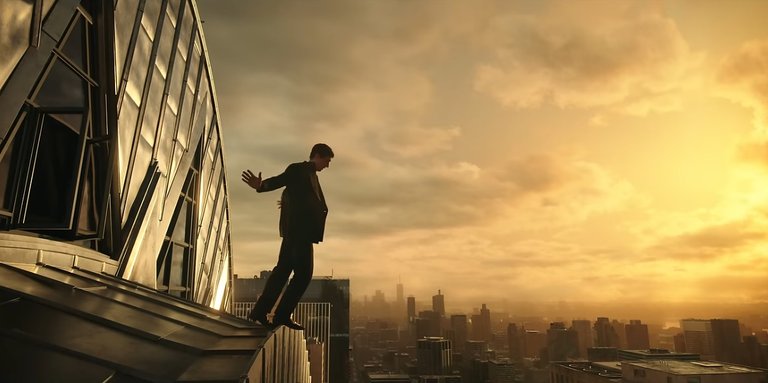
AMERICA: THE HERO IDEAL
In his 1931 essay, The Complication American Psychologist, Carl Jung wrote about one of the things that made America what it was back then, a force to be reckoned with in almost every aspect of civilization. He wrote,
"Your most idealistic effort is concerned with bringing out the best in every man, and when you find a good man you naturally support him and push him on, until at last he is liable to collapse from sheer exertion, success, and triumph."
This idea has been cultivated in every family and school of being a 'good sport', courageous, efficient, and brave. In short, a hero.
He further wrote, "The whole system anxiously tries to get the best man into the best place"
"America is perhaps the only country where 'greatness' is unrestricted because it expresses the most fundamental hopes, desires, ambitions, and conviction of the nation."
This has ultimately and indirectly contributed to the type of heroism Hollywood cinema was showing back then and how it affected the overall psychology of the population. It was "abound with heroes of every description".
12 ANGRY MEN. AGAIN
I said again because it has been used as my case example countless times. In this 1957 film directed by Sidney Lumet, the visual language, gestures, and even how the hero archetype character talks have been established right from the beginning.
You can see the difference between this character and the rest. It is subtle but at the same time significant. The character who fought the majority is seen standing alone peering outside the window. It is a symbol of someone who thinks beyond his and others' usual mental cocoon in order to form a new and fresh perspective.
It was quite revealing and shocking to me when I found out that around 15 years ago I was assigned to take photographs of architects in my office, Malaysia's very own guru and maestro, Hijjas Kasturi Architects, and my first instinct was to ask them to stand next to the window and look outside!

OF 'IMR' AND MEGALOPOLIS
This is even years before I consciously start learning about cinema and its visual language. But recently I found out from the book 'Life to those Shadows' written by Noel Burch, about IMR, or Institutional Mode of Representation.
Noel wrote about IMR as "It examines the principles of visualization - camera placement and movement, lighting, editing, mise-en-scene, that film-makers and audiences came to internalize."
It is perhaps through the decades of growing up with classic Hindi and Hollywood films that has subconsciously embedded the values of IMR into me.
It is also interesting to know that the main character who peeks outside the window at the beginning of the film is also an architect! Architects were the exemplary archetype for society back then because of their civilizational skills of building a nation with a great style of architecture to finally affect the morale, ethos, and thus pathos of a country, such as Great America back then.

In the recent release of the latest Francis Ford Coppola movie called 'Megalopolis', the director also uses the architect archetype for his main character (played by Adam Driver). The opening of the film shows him being suicidal on top of the Chrysler Building in New York, saying a lot about the death of the art in architecture itself, in this case, the Art Deco movement, which happened at the same time during the peak time of the great America. On the poster, Adam Driver is holding the architect's old drawing tool called the 'T-square' bearing that symbolic urge to return to the fundamentals before breaking the rules, and before the decline of our own 'Megalopolis'. The film ends with all the main characters standing frozen on the stage whilst the newborn baby is fully alive and animated, which like in the classic 1950s Rashomon, bears the question of the fate of the next generation.
MALAYSIA: THE HERO IDEAL?
It is quite a complex yet legitimate connection between things, isn't it? Now look at how our own Malaysia is doing. Does it, like Carl Jung said earlier, "...anxiously tries to get the best man into the best place" to start with? We are losing more skilled workforce to other countries by the year, and with what has been going on (despite the so-called change of political regime), it is almost the same, if not worse.

We are not anxious to get the best man into the best place, but those with globally bad reputations are being caressed and sympathized. It is called 'ineptocracy', meaning "...a system of government where the least capable of producing, and where the members of the society least likely to sustain themselves or succeed, are rewarded with goods and services paid for by the confiscated wealth of a diminishing number of the producers."
Back in 1993, I did have the uplifting morale that Malaysia was capable of everything. That visionary MAS commercial with the 'Wau' traditional kite-shaped spaceship projecting out from the TV screen was such a boost.
Now I have realized that Malaysia is indeed capable of "everything". It is quite to total opposite of what Carl Jung wrote about the great America earlier.
The younger generation is looking up to them as (bad) examples. And guess what kind of cinema this Malaysian 'Hero Ideal' is showing? Not the kind of heroes like in those classic Hollywood films, for sure! And how do these distorted logos eventually affect the Malaysian ethos and ultimately pathos?
Perhaps it is true that the whole men at the top we are having now are fruits that have been reaped from the same tree. What has to change is the seed that we are sowing for the future. But does any of them think so?
We are going to be 5 years pass the infamous 'Vision 2020' which had a great start 4 years ago with the epic and shameless takeover by the backdoor government. The 1993 MAS futuristic TV commercial might just be reminiscent of the real-life failed Utopia that the architect character of Adam Driver in Megalopolis envisioned.
Here's to what 2025 may bring to us all.
Regards,
Citizen, Voter, and Tax Payer.
